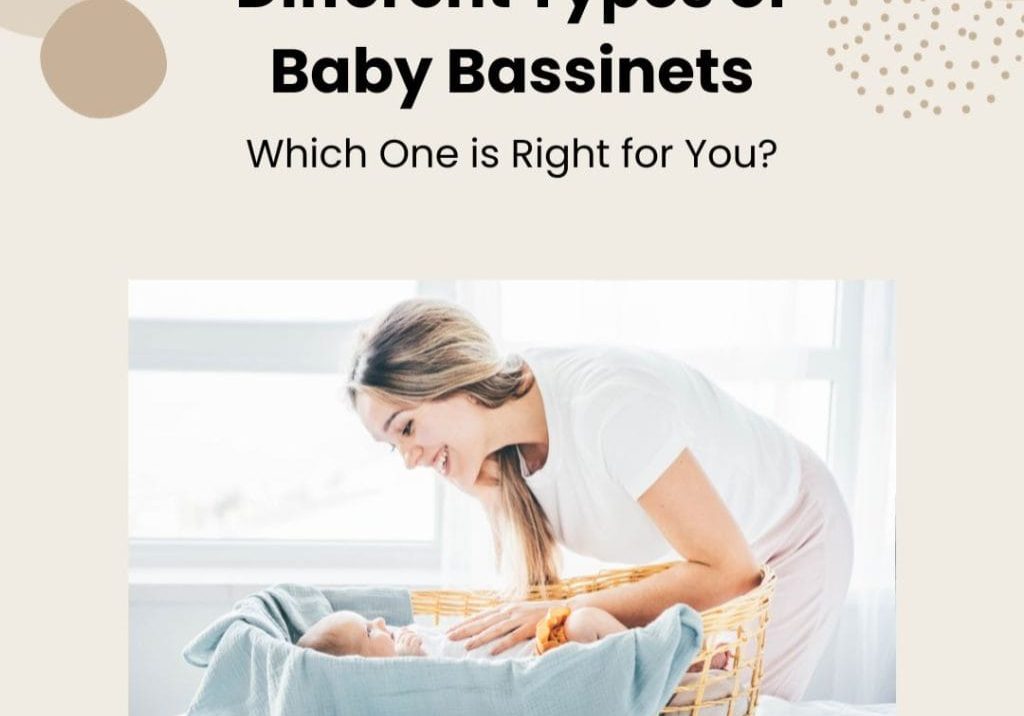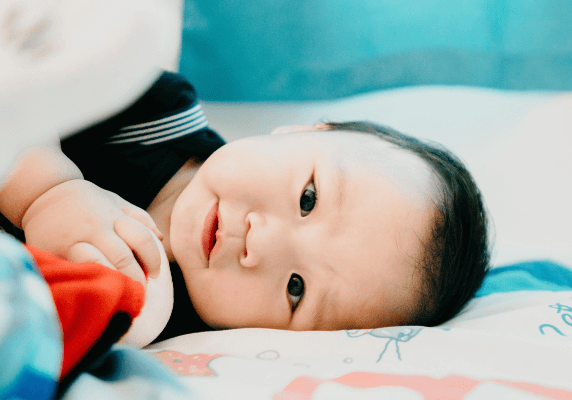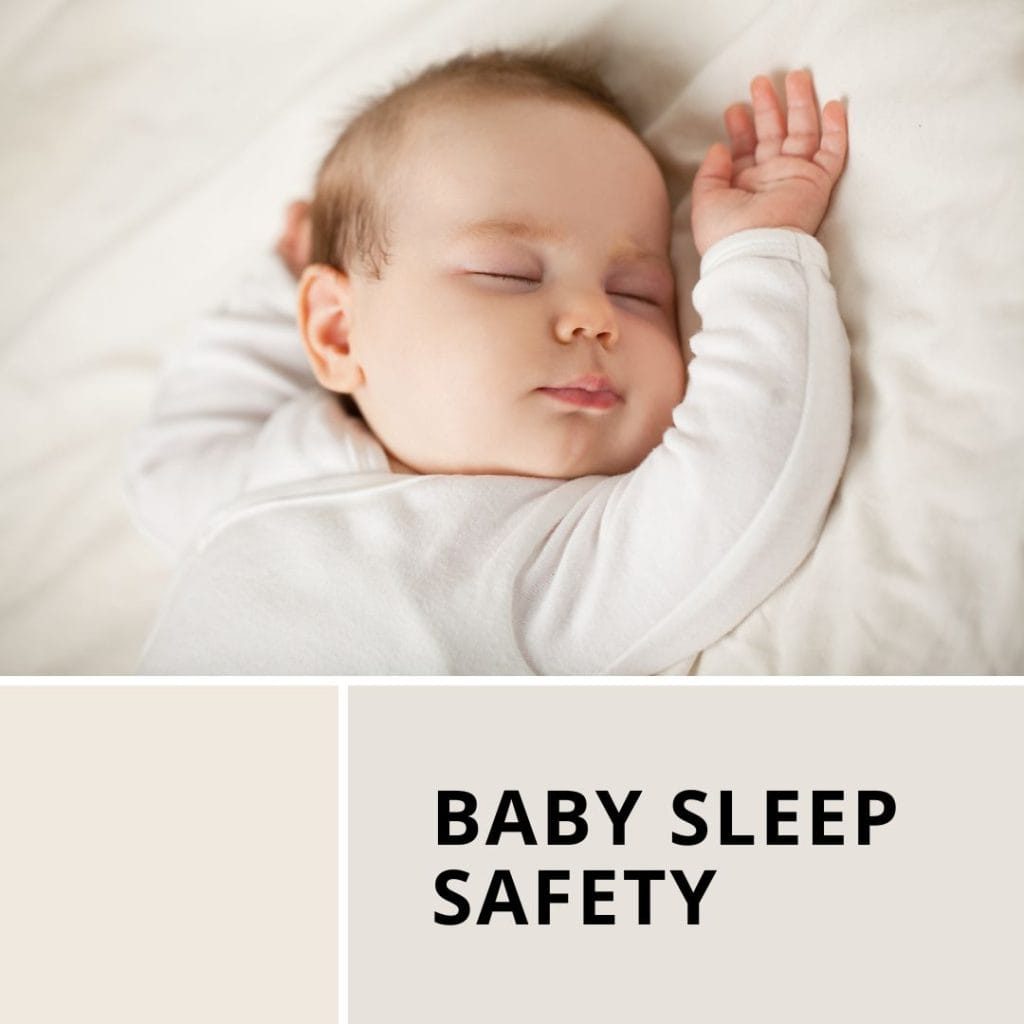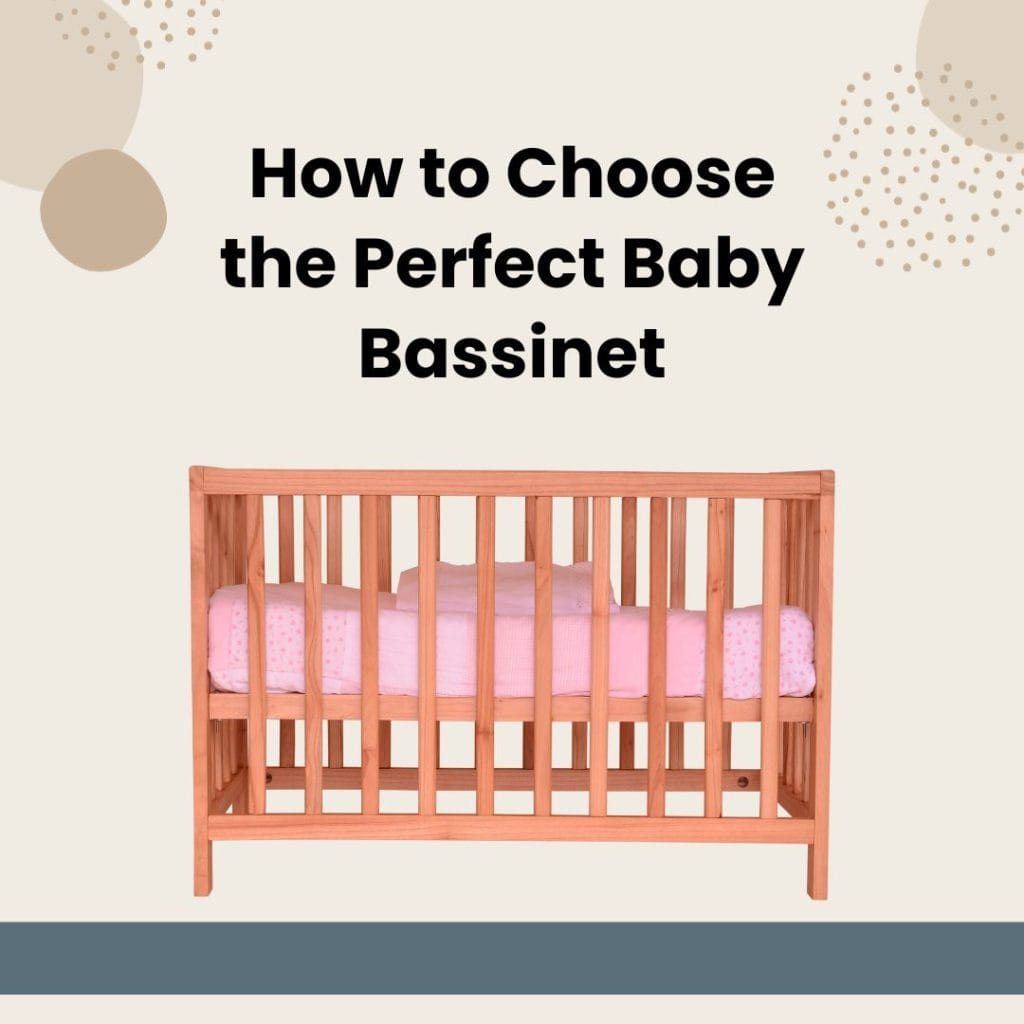One of the most critical aspects of nurturing your little one is ensuring they get the healthy, restful sleep they need for their development and well-being. Sleep is not just a nighttime necessity; it’s a substantial part of your baby’s early life, impacting everything from growth to mood and learning. This makes choosing the right sleeping gear, particularly bassinets and mattresses, more than just a matter of comfort—it’s a vital decision for your baby’s safety and health.
Whether you’re setting up a nursery for the first time or looking to update your existing setup, this guide is designed to ease your decision-making process, ensuring that your little one drifts off into dreamland safely and comfortably each night. So, let’s begin this journey together, ensuring every night is a good night for your precious baby.
Understanding Baby Sleep: Patterns, Needs, and Developmental Impacts
As parents, we often hear about the importance of sleep for our babies, but understanding the underlying science and its impact on development can significantly enhance how we approach this critical aspect of childcare. This article delves into the intricacies of baby sleep, exploring patterns, needs, and the profound ways sleep influences physical and cognitive development.
The Science of Baby Sleep: Patterns and Needs
Sleep Cycles in Infants
Babies experience sleep in cycles that include both REM (Rapid Eye Movement) and non-REM sleep. Unlike adults, they spend more time in REM sleep, which is crucial for the extraordinary brain development occurring in the first few years of life. These cycles are shorter and more varied, leading to the frequent waking periods parents are often familiar with.
Understanding Sleep Patterns
In the first few months, babies haven’t yet developed a circadian rhythm — the biological clock influenced by external cues like light and darkness. This rhythm starts to form around the 6-month mark, gradually leading to more extended periods of sleep at night. Recognizing these patterns helps parents create conducive sleep schedules and environments.
Sleep Needs by Age
- Newborns (0-3 months): Require 14-17 hours of sleep distributed over irregular intervals throughout the day and night.
- Infants (4-11 months): Need about 12-15 hours as they start sleeping longer at night with naps during the day.
- Toddlers (1-2 years): Require 11-14 hours, including naps, with increasing nighttime sleep duration.
How Sleep Impacts Baby’s Development
Physical Growth
Sleep directly impacts physical development. Growth hormone is primarily secreted during sleep, making those restful hours crucial for physical growth. Additionally, restful sleep supports the development of the immune system, helping babies fight off illnesses and maintain overall health.
Cognitive and Emotional Development
During sleep, the brain processes and consolidates information, forming the building blocks of learning and memory. This process is vital for cognitive skills like attention, learning, and problem-solving. Emotionally, well-rested babies are more patient, have better attention spans, and are generally more cheerful and responsive.
Formation of Sleep Habits
The patterns and habits established in infancy can influence sleep behaviors later in life. Establishing a regular sleep schedule and a calming bedtime routine can encourage better sleep habits, contributing to healthier sleep patterns as children grow.
Tips for Promoting Healthy Baby Sleep
- Establish a Routine: Consistency with bedtime and naptime routines can signal to your baby that it’s time to wind down.
- Create a Sleep-conducive Environment: A quiet, dark, and slightly cool room is ideal for sleep. Consider white noise machines and blackout curtains if necessary.
- Monitor Sleep Cues: Pay attention to signs of sleepiness to avoid overtiredness, such as rubbing eyes, yawning, and fussiness.
- Encourage Daytime Activity: Exposure to natural light and engaging activities during the day can help regulate their sleep cycle.
Choosing the Right Bassinet: Types, Pros, Cons, and Selection Tips
Choosing the right bassinet is one of the first critical decisions you’ll make as a new parent. A bassinet provides a safe, snug space for your baby to sleep during those first few months. With various types available, each suited to different needs and preferences, understanding the options and what to look for is essential. This article explores the types of bassinets, their pros and cons, and key features to consider when selecting the perfect one for your baby.
Types of Bassinets and Overview
Standard Bassinets
Traditional bassinets are compact, portable beds designed for infants. They usually come with fixed or foldable legs and a thin mattress.
Pros:
Often more affordable, lightweight, and easy to move around the house.
Cons:
Limited in features; might not have extra storage or motion capabilities.
Co-Sleeper Bassinets
Co-sleeper or bedside sleepers attach to the side of the parent’s bed, allowing for easy access to the baby throughout the night.
Pros:
Promotes bonding and makes nighttime feeding easier; adjustable height features.
Cons:
Not as portable; requires a compatible bed for secure attachment.
Travel Bassinets
Designed for families on the go, travel bassinets are lightweight and fold down compactly.
Pros:
Highly portable and easy to pack; some models offer UV protection and bug nets for outdoor use.
Cons:
May not be as sturdy as standard bassinets; often have a shorter usage span as babies grow.
Multi-Function Bassinets
These bassinets come with additional features like built-in soothing vibrations, sounds, and mobiles.
Pros:
Offers extra features to soothe and entertain the baby; some convert into changing tables or toddler seats.
Cons:
Can be more expensive; might require more space.
Pros and Cons of Each Type
Co-Sleeping:
Pros include easy access for feeding and comforting.
Cons might be less mobility and higher price.
Travel-Friendly:
Pros are portability and convenience for on-the-go families.
Cons include less durability and comfort compared to stationary bassinets.
Multi-Function:
Pros are the added features for convenience and baby’s enjoyment.
Cons might be complexity, size, and cost.
Selecting the Perfect Bassinet
When choosing a bassinet, consider the following key features:
Safety Standards
Ensure the bassinet meets current safety standards and hasn’t been recalled. Look for a sturdy frame, breathable sides, and a firm mattress.
Size and Portability
Consider the size of the room and if you’ll need to move the bassinet between rooms or take it on trips. Portability can be a significant factor for many families.
Ease of Use
Check how easy it is to assemble, clean, and use daily. A machine-washable lining and waterproof mattress are practical features.
Adjustability
Some bassinets come with height adjustment features or can rock/sway to soothe the baby. Consider if these features are important to you.
Budget
Set a budget considering that a bassinet is typically used for the first few months. Decide if you want to invest in a model with more features or a straightforward, cost-effective option.
The Importance of Baby Mattresses: Ensuring Safe and Healthy Sleep
When setting up a nursery, every little detail matters, especially when it comes to where your baby will be spending much of their time—sleeping. A baby mattress isn’t just a sleeping surface; it’s a crucial component of your baby’s sleep environment that affects their safety and health. This article explores the vital role of baby mattresses in promoting healthy sleep and the important safety standards and certifications parents should look for.
Role of a Mattress in Promoting Healthy Sleep
Support and Comfort
A good baby mattress provides the right balance of support and comfort for your little one. It’s firm enough to keep the baby’s growing bones supported but soft enough to ensure a comfortable sleep. An appropriate mattress supports the alignment of the baby’s spine and neck, promoting better sleep quality and overall well-being.
Hygiene and Health
Mattresses designed for babies often feature materials that resist mold, mildew, and bacteria. These hypoallergenic properties are crucial in maintaining a clean sleeping environment, reducing the risk of allergies, and promoting overall health. Look for mattresses with removable and washable covers to maintain cleanliness easily.
Temperature Regulation
The material and design of the mattress can affect how well it regulates temperature. A well-ventilated mattress helps to dissipate heat and maintain a comfortable sleeping temperature, reducing the risk of overheating, which is a known risk factor for SIDS (Sudden Infant Death Syndrome).
Safety Standards and Certifications for Baby Mattresses
Safety Standards
- Firmness: The American Academy of Pediatrics recommends a firm mattress to reduce the risk of SIDS. A firm mattress doesn’t conform to the shape of the baby’s head, reducing the risk of suffocation.
- Size: A proper fit within the crib is essential. There shouldn’t be gaps between the mattress and the crib walls where the baby could get trapped.
- Materials: Look for materials that are non-toxic and free from harmful chemicals. Babies are more susceptible to the effects of toxic substances due to their developing bodies and immune systems.
Certifications
- CertiPUR-US®: This certification indicates that the foam in the mattress has been tested and meets specific criteria for content, emissions, and durability, and is made without harmful chemicals.
- GREENGUARD Gold: Mattresses with this certification meet strict criteria for low chemical emissions, contributing to healthier indoor air quality around your baby.
- OEKO-TEX® Standard 100: This global standard ensures that textiles used in the mattress are tested for harmful substances, making them safe for close contact with your baby’s skin.
Choosing the Right Baby Mattress
When selecting a mattress, consider the following:
- Material: Whether it’s foam, innerspring, or organic materials, ensure it meets safety standards and fits your baby’s needs.
- Waterproof and Washable: Look for waterproof and easy-to-clean options to keep the mattress hygienic over time.
- Breathability: A breathable mattress helps regulate temperature and ensures a comfortable sleep for your baby.
- Warranty and Durability: Consider how long the mattress will last and whether it comes with a warranty for any issues.
Selecting the Best Baby Mattress: Types, Needs, and Choosing Factors
As parents, we strive to make the best choices for our children, starting from their very first bed. Selecting the best baby mattress is crucial for ensuring a safe, comfortable, and healthy sleep environment. With various types on the market, each suited to different needs, understanding your options is key. This article will guide you through the different types of baby mattresses, how to match them to your needs, and the factors to consider when making your selection.
Types of Mattresses and Description
Foam Mattresses
- Lightweight and often more affordable, foam mattresses are a popular choice. They are made from polyurethane, providing a firm surface for infants.
- Best For: Parents looking for an economical, lightweight option.
Innerspring Mattresses
- These mattresses have coils inside, providing a firm and resilient surface. They are typically heavier and more durable than foam.
- Best For: Parents who prefer a traditional, sturdy mattress with longevity.
Organic Mattresses
- Made from natural materials like cotton, wool, or latex, organic mattresses are free from chemicals and synthetic materials.
- Best For: Parents who prioritize an eco-friendly, hypoallergenic environment.
Dual-Sided Mattresses
- These mattresses feature a firmer side for infants and a softer side for toddlers, providing long-term value as your child grows.
- Best For: Parents looking for a mattress to last through the toddler years.
Discussing the Best Mattress for Various Needs
- For Allergy-Prone Babies: Opt for hypoallergenic and organic mattresses that minimize exposure to allergens and chemicals.
- For Easy Maintenance: Look for waterproof and machine-washable covers to simplify cleaning and ensure hygiene.
- For Small Spaces: Lightweight foam mattresses can be easier to handle, making them suitable for compact nurseries or frequent room changes.
- For Long-Term Use: Consider dual-sided or higher-end innerspring models that can adapt to your growing child’s needs.
How to Choose a Mattress: Factors to Consider
Safety First
- Ensure the mattress fits snugly in the crib without gaps.
- Choose a firm mattress to reduce the risk of SIDS, as recommended by pediatric guidelines.
Comfort and Support
- Assess the firmness and support level. A good mattress should support your baby’s body and maintain spinal alignment.
- Consider the breathability of the material, especially if your baby tends to overheat.
Materials and Certifications
- Look for non-toxic materials and certifications like CertiPUR-US, GREENGUARD Gold, or OEKO-TEX Standard 100 to ensure safety and quality.
- Consider whether organic materials are important to you and if they align with your lifestyle and values.
Durability and Warranty
- A durable mattress can last through multiple children or convert for toddler use.
- Check the warranty and return policy to ensure long-term satisfaction and protection against defects.
Reviews and Recommendations
- Read reviews from other parents and consult recommendations from credible sources.
- Ask for recommendations from family and friends who have recently made similar purchases.
Safety and Comfort: A Holistic Approach to Baby Sleep Environments
When it comes to our babies, safety and comfort are the top priorities for every parent, especially in creating an ideal sleep environment. A holistic approach to this involves integrating the right bassinet and mattress selection, along with maintaining and regularly checking the baby’s sleep environment. This article provides insights into creating a safe, comfortable, and nurturing space for your baby to rest and grow.
Integrating Bassinet and Mattress Selection for Optimal Safety and Comfort
Choosing the Right Bassinet
- Safety Features: Look for a sturdy bassinet with a firm base, breathable sides, and no sharp edges or small parts.
- Appropriate Size: Ensure the bassinet is appropriately sized for your baby’s age and weight. It should offer enough space for movement but not be so large as to pose a safety risk.
Selecting the Perfect Mattress
- Firm and Fit: Choose a firm mattress that fits snugly in the bassinet or crib without any gaps, reducing the risk of entrapment or suffocation.
- Material Matters: Opt for materials that are hypoallergenic, non-toxic, and certified for safety, ensuring a healthy sleeping environment.
Harmonizing the Two
- Compatibility: Ensure the mattress and bassinet are compatible in size and style, providing a seamless, safe sleeping environment.
- Test Together: Always test the mattress in the bassinet or crib before use to check for fit and firmness.
Tips on Maintaining and Checking Baby’s Sleep Environment
Regular Maintenance
- Cleanliness: Keep the sleep area clean and free from dust and allergens. Wash bedding regularly in gentle, baby-safe detergents.
- Inspection: Regularly inspect the bassinet and mattress for any wear and tear, loose parts, or other potential hazards.
Ensuring Optimal Conditions
- Temperature: Maintain a comfortable room temperature, typically between 68-72°F (20-22°C), to prevent overheating or chilling.
- Air Quality: Ensure good ventilation and consider using an air purifier to maintain clean air, free of pollutants and allergens.
Safe Sleep Practices
- Back to Sleep: Always place your baby on their back to sleep, as recommended by pediatricians to reduce the risk of SIDS.
- Minimalism: Keep the sleep area free from toys, pillows, and loose bedding, which can pose suffocation hazards.
Regular Checks and Updates
- Growth Adaptation: As your baby grows, reassess the suitability of the bassinet and mattress, upgrading when necessary to accommodate size and weight changes.
- Safety Recalls: Stay informed about any recalls or safety notices related to your baby’s sleep products.
Ensuring Safe Sleep for Your Baby: Practices and Solutions for Common Concerns
Ensuring a safe sleep environment for your baby is paramount to their health and well-being. While the joy of watching your baby sleep is unmatched, understanding and implementing safe sleep practices is crucial to prevent risks such as Sudden Infant Death Syndrome (SIDS) and other sleep-related accidents. This article outlines key guidelines for safe sleep practices and addresses common sleep concerns with practical solutions.
Guidelines for Safe Sleep Practices
Back to Sleep
- Positioning: Always place your baby on their back to sleep, for naps and at night, until they are 1 year old. This position is shown to significantly reduce the risk of SIDS.
Use a Firm Sleep Surface
- Mattress Selection: Ensure the mattress in the crib, bassinet, or portable crib is firm and fits snugly with no gaps. A firm surface helps maintain an open airway and supports the baby’s posture.
Keep Soft Objects and Loose Bedding Away
- Simplicity is Key: Keep the crib free of pillows, stuffed animals, bumpers, and loose bedding. Use a sleep sack or swaddle for warmth instead of blankets.
Share a Room, Not a Bed
- Proximity for Monitoring: It’s recommended to share a room with your baby for at least the first 6 months. However, avoid bed-sharing, which increases the risk of suffocation and overheating.
Avoid Overheating
- Optimal Temperature: Keep your baby comfortably warm, not hot. Dress your baby in light sleep clothing, and keep the room at a temperature comfortable for an adult.
Addressing Common Sleep Concerns and Solutions
Managing Irregular Sleep Patterns
- Routine: Establish a regular bedtime routine and schedule. Consistency helps regulate your baby’s sleep cycle and encourages better sleep habits.
- Environment: Ensure the sleep environment is conducive to sleep—quiet, dark, and cool.
Dealing with Night Wakings
- Feeding: Ensure your baby is well-fed before bed but avoid overfeeding. Sometimes, night waking is due to hunger, especially in younger infants.
- Comfort: Learn to differentiate between normal fussiness and the need for attention. Brief wake-ups are common and usually resolve as the baby learns to self-soothe.
Preventing Flat Head Syndrome
- Tummy Time: Encourage supervised tummy time while the baby is awake. This helps develop neck and shoulder muscles and relieves pressure on the back of the head.
- Positioning: Change the direction your baby lies in the crib from one week to the next. This prevents the baby from lying in the same position all the time.
Monitoring Health and Development
- Regular Check-ups: Stay up-to-date with pediatric appointments to monitor your baby’s growth and development. Discuss any sleep concerns with your healthcare provider.
- Awareness: Be aware of the signs of illness or discomfort, and seek medical advice if you’re concerned about your baby’s sleep patterns or health.
Conclusion
From understanding the different types of bassinets and mattresses to recognizing the importance of safety standards and the role each plays in your baby’s developmental journey, it’s clear that these decisions are integral to your child’s well-being. Remember, the choices you make now will provide comfort and security for your baby and peace of mind for you. So, take these insights, consider your unique needs and preferences, and create a nurturing space where your baby can thrive and grow. Here’s to many nights of peaceful sleep and happy, healthy development for your little one!










